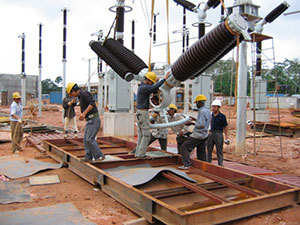
Most firms in Kenya have not taken advantage of reduced electricity charges at night.
The latest official data now show that a year after the introduction of the Time of Use (ToU) tariff, whereby large power consumers get a 50 per cent discount on power used in the off-peak hours of between midnight and 6am, off-peak consumption dropped by close to 30 percent.
The drop, the only one recorded in all the other categories of power demand may now send the government to the drawing board to see how the manufacturers can benefit from cheaper power.

Costly power has been blamed for low competitiveness of Kenya-made products globally and the relocation of manufacturers to other countries such as Ethiopia.
“Total domestic demand for electricity increased by 3.5 per cent to 8,702.3 GWh in 2018.
“The demand for electricity registered growth in all categories except off-peak whose demand declined by 28 per cent to 30.4 GWh in 2018.

“Demand for domestic and small commercial consumers increased by 3.9 percent to 3,665.9 GWh in 2018,” reads the Economic Survey report for 2019 released last week.
The manufacturers who fall under the commercial and industrial consumers, however, used more power during normal operating hours, driving up demand from 4,199.0 GWh in 2017 to 4336.5 GWh in 2018.
Off-peak demand fell to 30.4GWh from the 2017 high of 42.2GWh in what signals renewed headache for energy consumption balancing whose peak hit highest in the evening and drop during the night.

The incentive for the manufacturers is designed in a way that they are required to meet their monthly energy consumption threshold — calculated in the last six months of 2017 — and be charged half price for any power consumed above this threshold during the off-peak hours
Kenya Association of Manufacturers energy adviser Sylvester Mokaka said firms are yet to find the driving demand to operate at night.

“We need to have the demand to trigger the trend of operating during the off-peak hours considering that operating at night is not so cheap as well.
Once we have demand for the products which largely depend on increased purchasing power, then the need to operate at night will come naturally,” he said.
